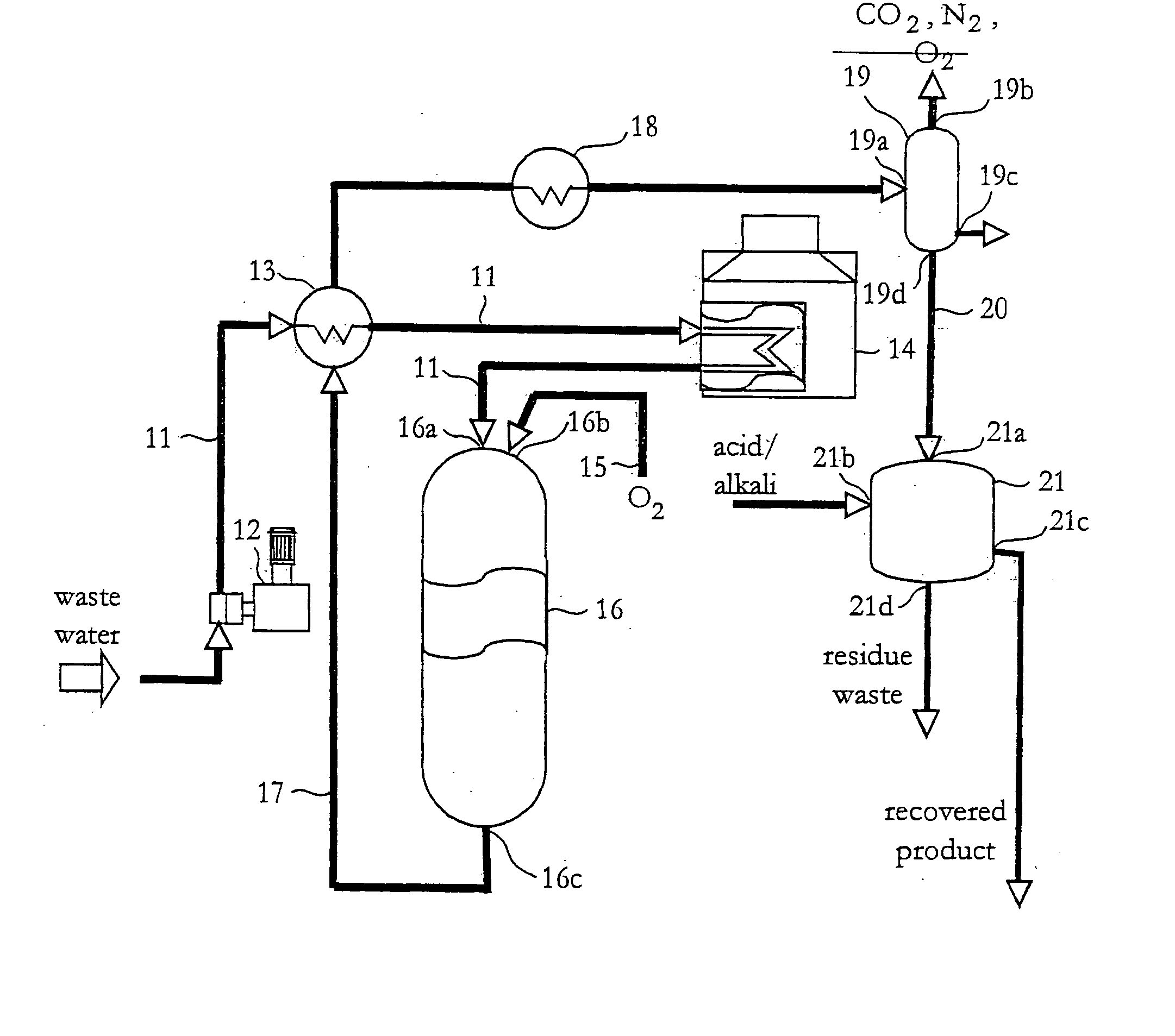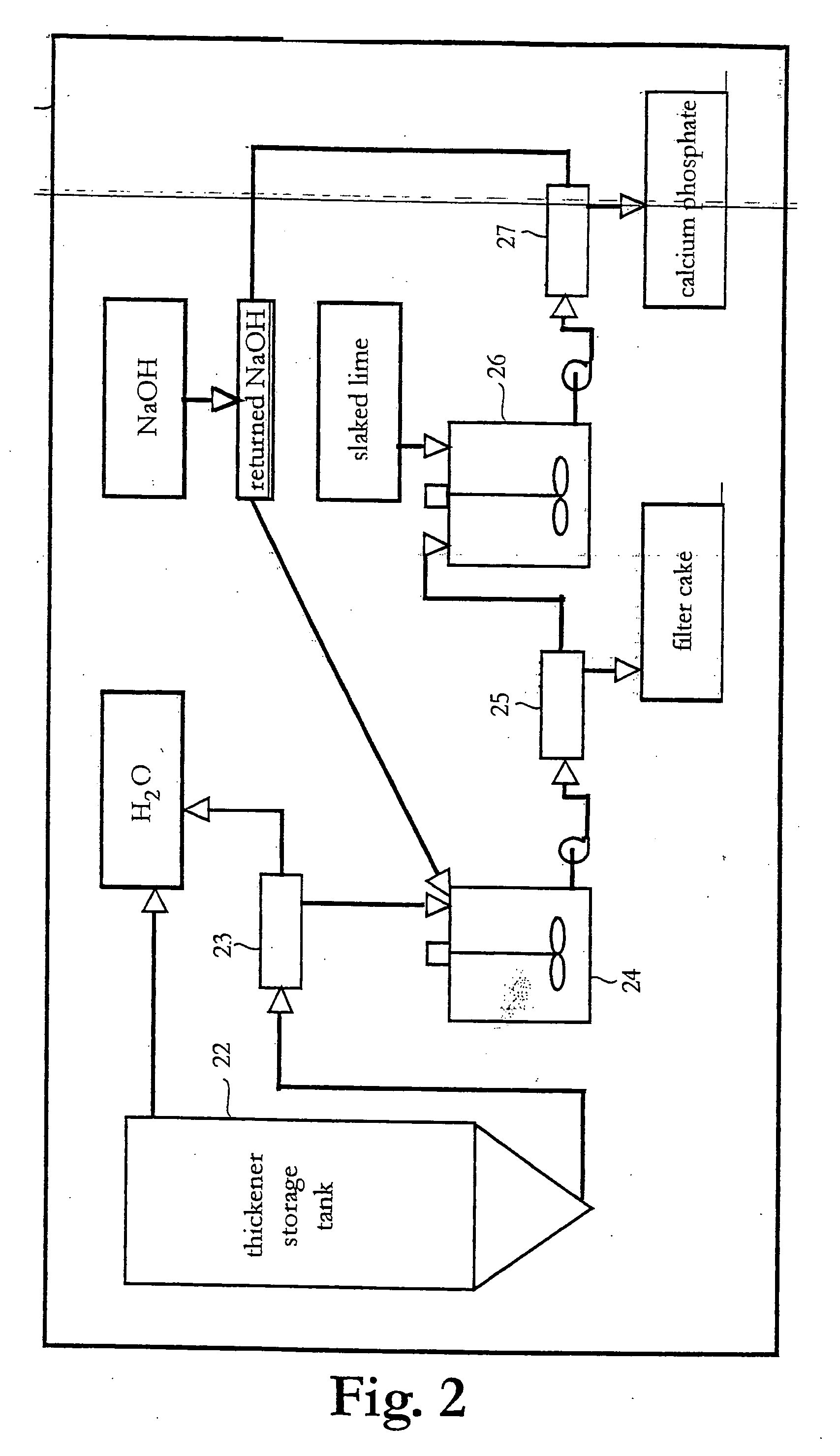Process and plant for the recovery of phosphorus and coagulants from sludge
a technology of phosphorus and coagulants, which is applied in the direction of water/sludge/sewage treatment, supercritical condition processes, pressurized chemical processes, etc., can solve the problems of organic material in waste burning, organic material remains unburned, and material material imposes problems, etc., to achieve the effect of improving performan
- Summary
- Abstract
- Description
- Claims
- Application Information
AI Technical Summary
Benefits of technology
Problems solved by technology
Method used
Image
Examples
Embodiment Construction
[0024] In the following description, for purposes of explanation and not limitation, specific details are set forth, such as particular applications, processes and plants, etc. in order to provide a thorough understanding of the present invention. However, it will be apparent to the man skilled in the art that the present invention may be practised in other embodiments that depart from these specific details.
[0025] With reference to FIG. 1 a plant for treatment of waste according to an embodiment of the present invention will be described.
[0026] The plant comprises one oxidation stage and one recovery stage.
[0027] The oxidation stage is mainly a system or supercritical water oxidation (SCWO) and includes a supply conduit 11 for wastewater, a high-pressure pump 12, a heat exchanger 13, a heater 14, and a supply conduit 15 for oxygen, a SCWO-reactor 16, and output conduit 17, a cooler 18 and a separator 19. The SCWO-reactor 16 includes two inlets 16a and 16b for the supply conduits 11...
PUM
 Login to View More
Login to View More Abstract
Description
Claims
Application Information
 Login to View More
Login to View More - R&D
- Intellectual Property
- Life Sciences
- Materials
- Tech Scout
- Unparalleled Data Quality
- Higher Quality Content
- 60% Fewer Hallucinations
Browse by: Latest US Patents, China's latest patents, Technical Efficacy Thesaurus, Application Domain, Technology Topic, Popular Technical Reports.
© 2025 PatSnap. All rights reserved.Legal|Privacy policy|Modern Slavery Act Transparency Statement|Sitemap|About US| Contact US: help@patsnap.com



